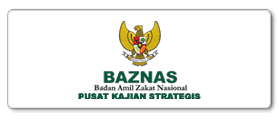The Analysis of Company Decisions in Choosing Sukuk and Bonds Using Logit Model
DOI:
https://doi.org/10.21580/economica.2019.10.1.3211Keywords:
Sukuk, Bonds, Financing Company Decisions, Characteristic Company, Logit ModelAbstract
Sukuk has become one of alternative financing for corporate. The development of Sukuk provides the flexibility choices of company’s funding decisions that required their needs and capabilities. Sukuk market in Indonesia is the second largest in emerging East Asia in terms of size but the number of issued Sukuk lower than a conventional bond. This study aims to obtain empirical evidence that the characteristics of the company influence the decision of the company in issuing Sukuk and bonds using the logit model. The results of this study conclude: (1) leverage has a negative influence and significant (2) size of the firm has a positive influence and significant (3) fixed assets has a positive influence and significant to the decision of the company in issuing Sukuk.Downloads
References
AAOIFI, Reporting Standards: Measuring Compliance. Advances in Accounting. Dubai: Author, 2008.
Agus Harjito, Martono, Manajemen Keuangan edisi 1, Yogyakarta : EKONISIA, 2008.
Arena, M.P., dan Howe, J.S.”Takeover exposure, agency, and the choice between public and private debt” , J. Financ, Res. 32, 2009.
Azmat, S., Skully, M., Kym, B. ”Issuer’s choice of Islamic bond type”. Pac. Basin Financ. J. 28, 122–135. 2014
Bapepam-LK dan DSN MUI. Himpunan Peraturan Badan Pengawas Pasar Modal dan Lembaga Keuangan tentang Pasar Modal Syariah. Jakarta: Kementrian Keuangan Republik Indonesia, Bapepam-LK, 2010.
Cantillo, dan M., Wright, J. “How do firms choose their lenders? An empirical investigation”, Rev. Finance. Stud. 13, 155e189, 2000.
Denis, D.J., Mihov, V.T. “The choice among bank debt, nonbank private debt: and public debt: evidence from new corporate borrowings”,J. Financ. Econ, 70, 3–28, 2003.
Fabozzi, Frank, Manajemen Investasi, Jakarta : Salemba Empat,2000
Grassa, R., Miniaoui, H.. “Corporate choice between conventional bond and sukuk issuance evidence from GCC Countries”. Research in International Business and Finance, 2017
Gujarati, D.N, Basic Econometrics Fourth Edition. McGraw Hill Book Company, 2004.
Hanafi, Mamduh M dan Halim A, Analisis Laporan Keuangan Edisi 4. Yogyakarta:UPP STIM YPKN, 2012.
Houston, Joel, James, Christopher. “Bank information monopolies and the mix of private and public debt claims”. J. Finance 51, 1863–1889, 1996
Johnson Shane, Shane A. “An empirical analysis of the determinants of the corporate debt ownership structure”. J. Quant. Anal. 32, 47–69, 1997
Krishnaswami, Sudha, Spindt, Paul A., Subramaniam, Venkat. “Information asymmetry, monitoring and the placement structure of corporate debt”. J. Financ. Econ. 51, 407–434, 1999.
Lin, Chen., Ma, Yue., Malatesta, Paul., Xuan, Yuhai. “Corporate ownership structure and the choice between bank debt and public debt”. J. Financ. Econ. 109, 517–534, 2013.
Mohamed, Hisham Hanifa., Masih, Mansur., Obiyathulla, I Bacha. “Why do issuers issue Sukuk or conventional bond? Evidence from Malaysian listed firms using partial adjustment models”. Pac. Basin Finance J. 34, 233–252, 2015.
Nagano, M. ”Islamic Finance and the Theory of Capital Structure”. University Library of Munich, Germany MPRA Paper 24567,2010.
Rauh, J.D., Ameer, S. (2010). Capital structure and debt structure. [Online], [Retrieved January 22, 2012], http://papers.ssrn.com/sol3/papers.cfm?abstract_id=1097577.
Sapto, Rahardjo, Kiat Membangun Aset Kekayaan (Panduan Investasi Saham). Jakarta : PT Elex Media Komputindo, 2006.
Shahida, S., Saharah, S. “Why do firms issue sukuk over bonds? Malaysian evidence”, Proceeding of the 15th Malaysian Finance Association Conference 2013 (MFA), 2–4 June 2013
Shirasua, Yoko, Xu, Peng. “The choice of financing with public debt versus private debt: new evidence from Japan after critical binding regulations were removed”. Jpn. World Econ. 19 (4), 393–424, 2013
Downloads
Published
How to Cite
Issue
Section
License
Authors who publish with this journal agree to the following terms:
Authors retain copyright and grant the journal right of first publication with the work simultaneously licensed under a Creative Commons Attribution License that allows others to share the work with an acknowledgment of the work's authorship and initial publication in this journal.
Authors can enter into separate, additional contractual arrangements for the non-exclusive distribution of the journal's published version of the work (e.g., post it to an institutional repository or publish it in a book), acknowledging its initial publication in this journal.
Authors are permitted and encouraged to post their work online (e.g., in institutional repositories or on their website) before and during the submission process, as it can lead to productive exchanges and earlier and greater citation of published work (See The Effect of Open Access).













